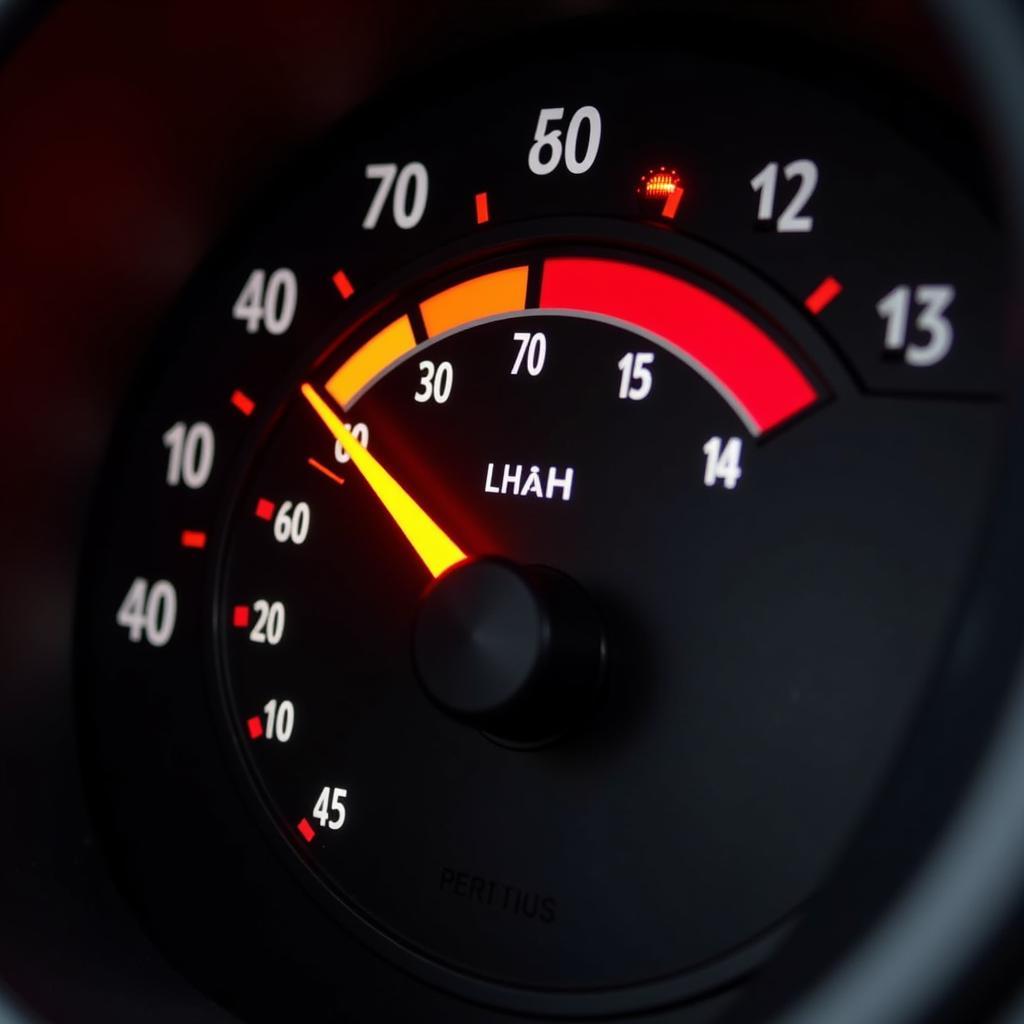The BMW 3 Series seat belt warning light is a crucial safety feature designed to remind you and your passengers to buckle up. However, when this light stays on or flashes intermittently, even when all seats are occupied and buckled, it signals a potential issue. This guide delves into the common causes of a malfunctioning seat belt warning light in BMW 3 Series vehicles and offers potential solutions to address this concern.
Understanding the Seat Belt Warning System in Your BMW 3 Series
Before diving into troubleshooting, it’s helpful to understand how the system works. Your BMW 3 Series utilizes a network of sensors to detect the presence and engagement of seat belts. When you buckle up, a sensor in the seat belt buckle registers the connection. This signal is then sent to the car’s computer, which turns off the warning light. If any sensor in the system malfunctions or detects an anomaly, the warning light on your dashboard illuminates.
Common Causes of a BMW 3 Series Seat Belt Warning Light
There are several reasons why your BMW 3 Series seat belt warning light might illuminate:
-
Faulty Seat Belt Buckle/Sensor: The most common culprit is a malfunctioning seat belt buckle or its integrated sensor. Over time, these components can wear out, get damaged, or experience electrical issues.
-
Wiring Problems: The wiring harness connecting the seat belt buckles and sensors to the car’s computer can become frayed, corroded, or disconnected, disrupting the signal flow.
-
Seat Occupancy Sensor Malfunction (If Equipped): Some BMW 3 Series models have seat occupancy sensors that determine if a passenger is present in the seat. A faulty sensor might trigger a false warning light, even if the seat is empty.
-
Software Glitch: Like any computer system, your BMW’s onboard computer can experience software glitches that might affect the seat belt warning system.
-
Aftermarket Accessories or Modifications: Installing aftermarket seats, seat covers, or other accessories that interfere with the seat belt system can trigger the warning light.
Diagnosing the Problem
Pinpointing the exact cause of the seat belt warning light requires a systematic approach. Here are some steps you can take:
-
Check All Seat Belts: Start by visually inspecting all seat belts, including the buckles and the areas where they retract. Look for any signs of damage, debris, or loose connections.
-
Listen for Beeping: Besides the warning light, does your BMW emit a continuous or intermittent beeping sound? This auditory cue often accompanies the visual warning and can provide additional clues about the issue.
-
Check for Diagnostic Trouble Codes (DTCs): Using a BMW-compatible OBD-II scanner, you can read any stored DTCs related to the seat belt system. These codes can provide valuable insights into the specific area of the system experiencing problems.
 BMW OBD2 Scanner
BMW OBD2 Scanner
Potential Solutions for a BMW 3 Series Seat Belt Warning Light
The solution to your seat belt warning light problem depends on the underlying cause:
-
Replace Faulty Components: If a faulty seat belt buckle, sensor, or wiring harness is identified, replacement is typically the most effective solution. It’s crucial to use OEM or high-quality aftermarket parts that meet BMW’s specifications.
-
Repair Wiring Issues: For minor wiring problems like loose connections or corroded terminals, cleaning the contacts and securing the connections might resolve the issue. However, more significant wiring damage often requires professional repair or replacement.
-
Address Seat Occupancy Sensor Problems: If a faulty seat occupancy sensor is suspected, it’s best to consult a qualified BMW technician for diagnosis and potential recalibration or replacement.
-
Software Update or Reset: In some cases, a software glitch might be the culprit. Connecting your BMW to a diagnostic tool capable of performing software updates or resets can potentially address the issue.
-
Inspect Aftermarket Modifications: If the problem arose after installing aftermarket accessories or making modifications, carefully inspect these additions for any interference with the seat belt system.
When to Seek Professional Help
While some seat belt warning light issues can be addressed with basic troubleshooting, it’s often advisable to seek professional assistance from a qualified BMW technician, especially if:
- You’ve tried the basic troubleshooting steps and the warning light persists.
- You’re uncomfortable working with electrical components or using diagnostic tools.
- The problem involves the seat occupancy sensor system or requires software-related solutions.
 BMW Technician Diagnosing Seat Belt Issue
BMW Technician Diagnosing Seat Belt Issue
Importance of Addressing Seat Belt Warning Light Issues
A functioning seat belt warning system is paramount for your safety and the safety of your passengers. Ignoring a persistent warning light could increase the risk of injury in an accident. Moreover, a malfunctioning seat belt system might prevent your airbags from deploying correctly in an accident, further compromising safety.
“Addressing seat belt warning light issues promptly is not just about avoiding a nuisance light on your dashboard; it’s about ensuring the optimal performance of your vehicle’s safety systems, which are designed to protect you and your passengers in the unfortunate event of an accident.” – Mark Stevenson, Senior Automotive Engineer
Conclusion
The seat belt warning light in your BMW 3 Series is a crucial safety feature you should never ignore. By understanding the common causes, performing basic troubleshooting, and seeking professional help when necessary, you can ensure this vital system operates as intended, providing you and your passengers with the highest level of safety on the road.

